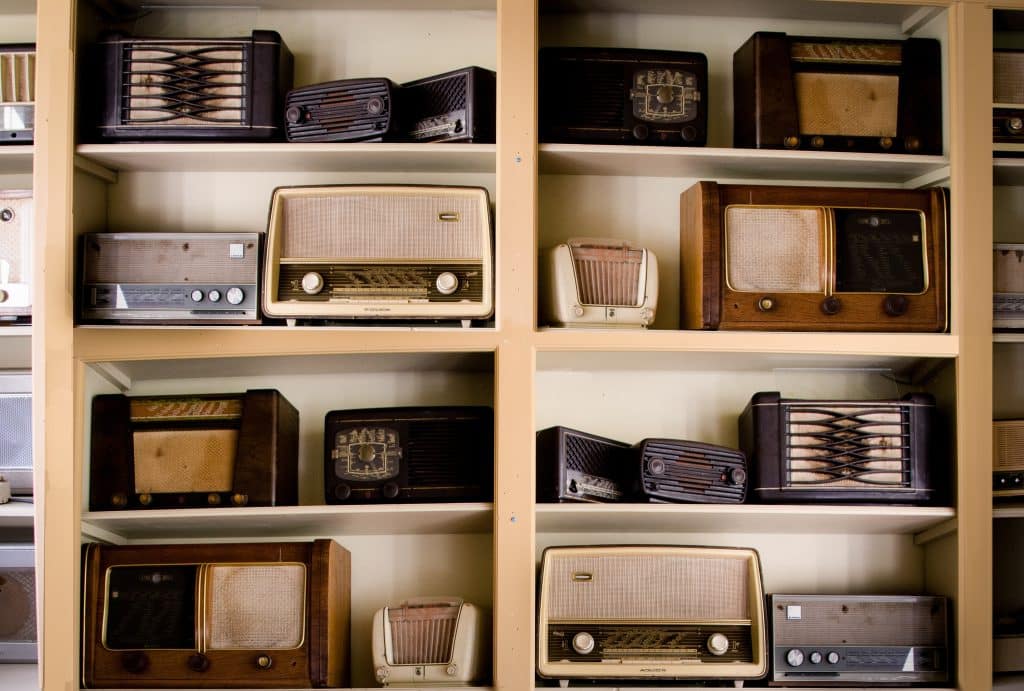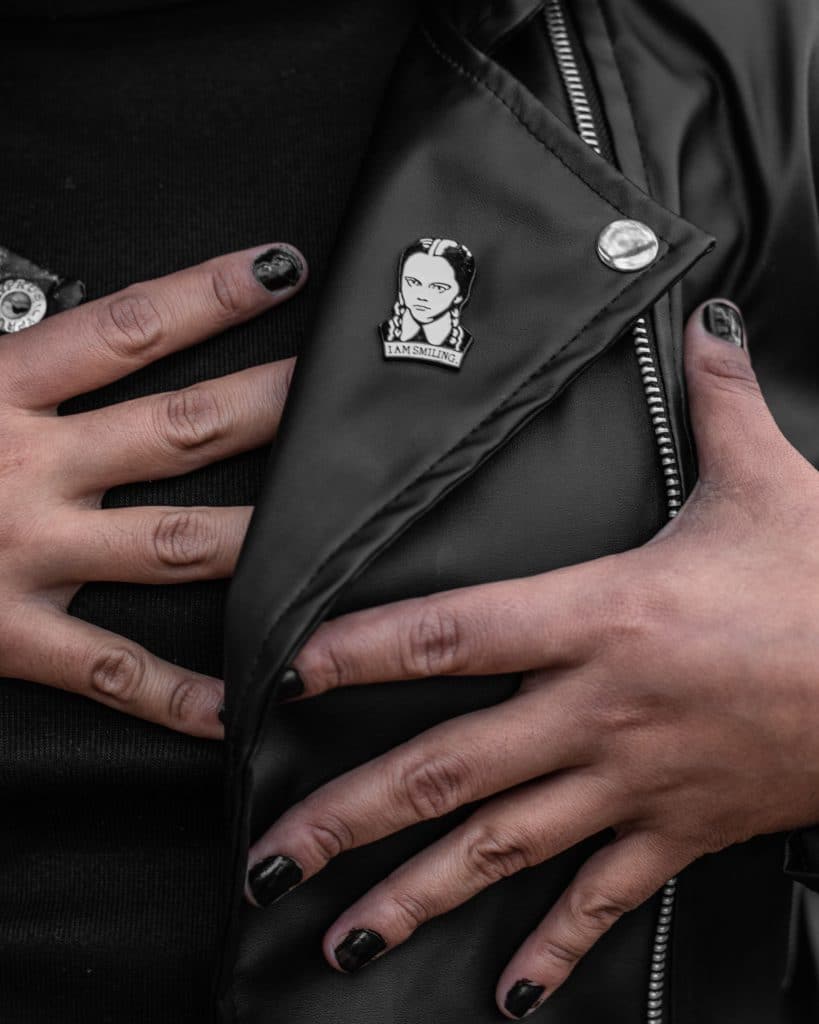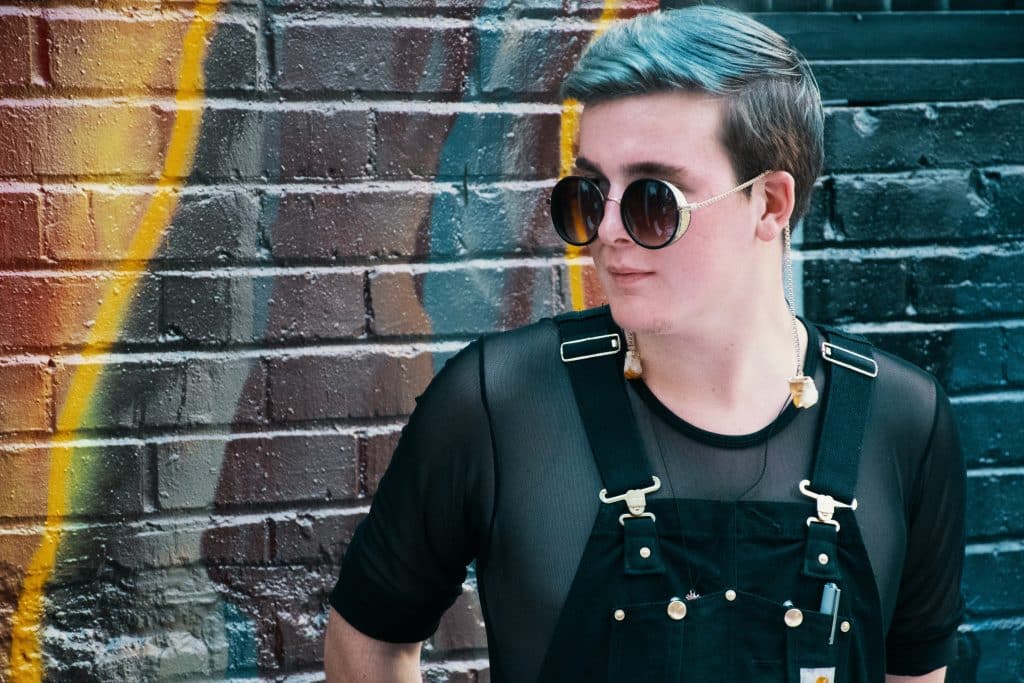In defence of goth, punk, metal and misunderstood music
Does our taste in music really say anything about our mental health? Our Second Step colleague and Equalities Champion, Terry, shares his love for music and challenges the stigma surrounding ‘alternative’ music genres.
I’ve always been pleased I had a broad education in music because of my passion for radio.
In September 1985, my parents bought me a second-hand shortwave radio receiver for my birthday. In the days before the internet, every country, every state, most religious groups, and many guerrilla groups or breakaway republics, had shortwave presences. Leaving aside the political output of the stations, for a young person discovering the world of music, there was everything on offer – brutalist Soviet music on Radio Moscow, the Latin rhythms of Radio Havana, traditional Indian music on AIR New Delhi, West African Hi-Life on Afrique No. 1, Nordic Noir from Radio Sweden, and so on.
I also found rebel stations, local and national – Radio Luxembourg broadcast every night to Britain from powerful transmitters in Central Europe, much to the annoyance of the British authorities. Meanwhile, off the coast there were several offshore ‘pirates’ – the hit music channel Laser 558 from a ship called the Communicator, and the irrepressible Radio Caroline which had an album rock format.

As the later eighties approached, the boom in unlicensed land-based pirate stations reached Bristol. Stations such as BAD Radio, Emergency Radio, Savage Yet Tender Radio and Fishponds Pirate Radio amongst dozens of others who helped open the airwaves up for today’s legal community radio stations. I heard a massive variety of music on these channels, from indie to punk rock, acid house, soul, reggae, lovers rock and jazz funk, to heavy metal.
I went to school in Keynsham whilst living in Bristol, and because I could pick up the city’s various pirate radios, was asked by the different groups of students to record various music genres – hip hop or thrash metal for example.
Because of this background, I have always loved music, and I enjoy a wide variety of sounds.
Music and mental health
It has become fashionable to some degree for there to be a societal angst about some forms of music. Indeed, sometimes the newspapers, both left and right wing whip up ‘moral panics’ about certain forms of music.
This is nothing new. In 1954 when Bill Hayley released Rock Around the Clock and young people went wild in cinemas, there was consternation in government. The hippie adjunct to the political counterculture of the late 60’s, punk rock in the 70’s, rap music in the early 80’s and the rave culture of the late eighties, all brought scornful lectures from teachers, youth workers, and the foam-at-the-mouth newspapers.
In recent years, there has been a renewed discussion about young people’s mental health. This is most welcome, and I hope that it will bring about major improvements in funding for services within the NHS and private clinics. But there has been a tendency for some pop psychologists to appear on daytime television shows and populist call-in programmes aimed at parents about supposed ’warning signs‘ of mental health problems, one of which is listening to gloomier music. By this they mean genres such as gothic rock, darkwave, industrial and doom metal.
I would suggest that this is making a new ‘moral panic’ where one need not exist. One that worries parents when all their children are doing is exploring their niche and what makes them happy in the world.
From punk to goth – how misunderstood music evolves
Goth as a distinct subcultural identity has been about since the musical and stylistic revolutions brought about by punk rock in the late seventies.
With its DIY principles of independent record labels, self-produced magazines and self-made merchandise, punk invigorated many young people’s lives and as it splintered into different scenes, its offspring inherited this rebellious spirit.
Many influences went into the gothic subculture including nineteenth century romanticism and the Louisiana voodoo blues music of Screaming Jay Hawkins. But there is a broad consensus that around 1979, fans of groups like Bauhaus and Joy Division were dressing in black denim and dying their hair black. Wikipedia notes that as early as 1978, music critics were applying the word ’gothic‘ to describe the music of Siouxie and the Banshees, a key post-punk group.
The 1979 single Bela Lugosi’s Dead by Bauhaus, a nine-minute track with echo, guitar effects and brooding (although perhaps slightly overblown, even camp) lyrics is listed by some music directories as the first bona fide goth release. But as with so many cultural phenomena, the situation is more nuanced.
The development of gothic music is beyond the scope of this article. But the goth radio station, Darkwave Radio, which broadcasts online, lists a host of subgenres including Avant Garde Goth, Cold Wave, Dark Ambient, Deathrock, Aggrotech, Ethereal Wave, Industrial, and New Folk. There is considerable crossover with other styles too – pagan music, shoegaze and various branches of indie rock (from an era when indie really did mean that a band was on an independent label).
Are gothic music fans more likely to have mental health issues?
One thing that causes angst amongst some educators and mental health professionals is the apparent moodiness of goth and associated forms of music. With introspective lyrics, a fixation with romantic histrionics, horror movies and Victorian ghost literature, it is perhaps understandable that concerned authorities would conflate gothic music with a vulnerability to depression and mental health issues. They worry that people within the goth and similar subcultures are going to have a great propensity to depression, anxiety and mood disorders.

In 2015, the respected online science news aggregate site, Science News Daily, ran an article claiming that “Goth Teens Could be More Vulnerable to Depression and Self Harm”. This headline, however, obscured a more nuanced article, based on a study by Lucy Bowes and published in the medical journal The Lancet. The survey of several thousand young people appeared to suggest that those who self-defined as a goths were several times more likely to be depressed and self-harm over a lengthy period of late adolescence and early adulthood.
But as any good scientist will remind you, correlation is not necessarily causation. Doctor Rebecca Pearson of the University of Bristol cautioned,
Teenagers who are susceptible to depression or with a tendency to self-harm might be attracted to the goth subculture which is known to embrace marginalised individuals from all backgrounds, including those with mental health problems.
Or, as Science News Daily put it:
The goth subculture could provide an important source of validation and a community within which young people who do not conform with societal norms can be understood.
In other words, affiliation with the culture of goth might be protecting young people by offering social solidarity, understanding and a shared experience.
Subcultures provide safety and community.
In my experience, these scientific and sociological observations are true. The gothic subculture has provided many people with a sense of community.
Here in Bristol, we have a patchwork of different communities living side by side. There are gay clubs, punk venues, metal venues and many live music locations. But I’ve got friends in smaller places, where there is a real benefit to having ‘alternative’ spaces.
Up in Stoke, my cat-loving college friends Tony and Claire used to go to a nightclub called Chicos. For decades, Chicos, situated in Hanley Town Centre, was a refuge for punks, goths, metallers, grunge kids, and all manner of subcultures. With its support for individual expression and attitude-free policy, it also welcomed LGBT people. One of my DJ friends, a transgender woman, tells me that when clubbing in the 1990s, she always gravitated to goth venues. There was a welcoming sense of tolerance. No one cared or judged whatever your gender identity was. For similar reasons, goth and punk venues have traditionally been places where women have felt reasonably safe, certainly compared with many “mainstream” venues.

In defence of goth, punk, metal and misunderstood music
Craig O’Hara, a graduate student, wrote some 20 years ago about his travels in the punk rock subcultures of the UK and US, in an anthology called The Philosophy of Punk, published by the anarchist book house A K Press. I picked up a copy years back in my local radical bookstore.
O’Hara observed that punks tend not to advocate for the continuation of either capitalism or communism. And indeed, here in Bristol, there are many punk rockers involved in groups working in ecology, peace, anarchism, workers’ rights and for community cohesion. Goths tend to be more introverted and introspective, but share the same belief in individual self-expression, autonomy and free thought, and reject many structures of the state and organised religion.
So, if you feel concerned that your friends or perhaps your offspring are listening to Marilyn Manson, or Korn or Limp Bizkit, or are generally wearing black clothes, eye liner and make up, then it’s not necessary to fret. You might find that they are actually looking after their mental health by expressing their angst in a socially responsible manner.
